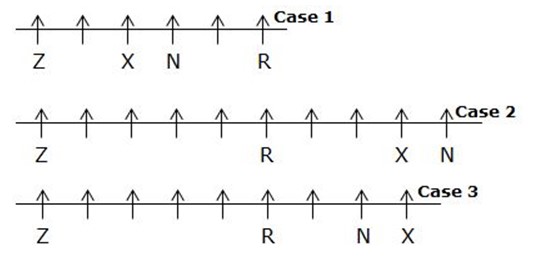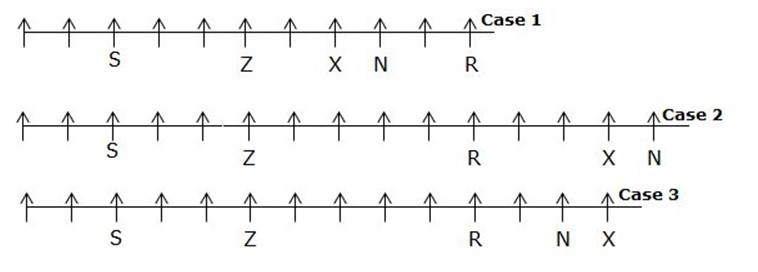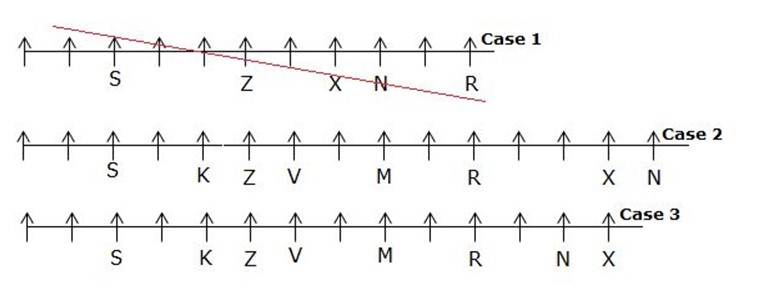Start learning 50% faster. Sign in now
X and N are immediate neighbors of each other. Only two persons sit between X and R. R sits fifth to the right of Z, who is not an immediate neighbor of N.  S sits third to the left of Z and is third from one of the extreme ends of the line.
S sits third to the left of Z and is third from one of the extreme ends of the line.  V sits second to the right of K and is an immediate neighbor of Z. M sits exactly between R and V. Here Case 1 gets eliminated.
V sits second to the right of K and is an immediate neighbor of Z. M sits exactly between R and V. Here Case 1 gets eliminated.  More than three persons sit between M and N, who sits third to the left of Q. There are no seats to the right of Q. Here, Case 3 gets eliminated and hence the final arrangement is,
More than three persons sit between M and N, who sits third to the left of Q. There are no seats to the right of Q. Here, Case 3 gets eliminated and hence the final arrangement is, 
Eight persons K, L , M, N, O, P, Q and R are seated around a circular table facing the centre. Who is opposite P?
I. P sits second to the left of...
Six persons P, Q, R, S, T and U are sitting around a circular table facing the centre but not necessarily in the same order. Who sits third to the left...
Six books, F through K are placed one above another, where the bottommost position is 1 and the position above it is 2 and so on. Which book is placed a...
How is B related to F?
I.B is wife of C. D is wife of E. F is sister of G, who is daughter of E.
II. E is husband of D, who is daughter &n...
Eight persons G, H, I, J, K, L, M and N are sitting around the circular table facing towards the centre. Who sits to the immediate left of I?
...
Among N, O, P, Q, which school has the highest number of students?
I. School N has fewer students than school Q.
II. School P has...
On which floor of the building does U stay? (The buildings has five floors 1, 2, 3, 4, 5)?
I. Only the odd – numbered floors are occupied...
Seven persons namely – Reena, Heena, Gautam, Ziyana, Hari, Rohit and Jyoti are sitting in a row not necessary in same order in such a way that some a...
J, K, L, M and N are sitting around a circular table, facing the centre. Who is on the immediate left of L?
I. J sits between K and N. L is on th...
The question given below consists of two statements numbered I and II given below it. You have to decide whether the data provided in the statements ar...